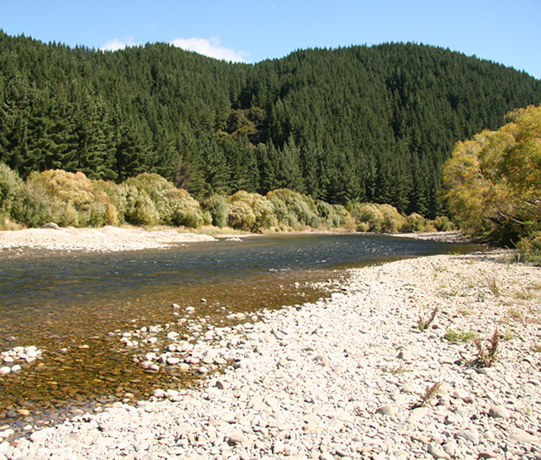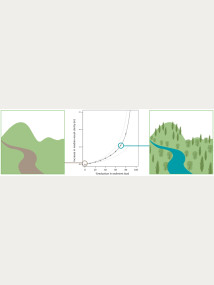| Funder | Collaborators | Duration |
|---|---|---|
| Ministry for the Environment (MfE) | National Institute of Water and Atmospheric Research (NIWA); Otago University |
6 years 5 months
Start date: 01 Jul 2014 End date: 31 Dec 2020 |

Mitigating the numerous impacts that fine sediment has in rivers requires a catchment-wide approach to reducing soil erosion
Since European settlement in New Zealand, large-scale catchment disturbance (e.g. forest clearance, establishment of agricultural land uses, and stream channel modification) has led to increased soil erosion and sediment loads in rivers, lakes, and estuaries. By international standards, sediment loads in some New Zealand rivers are very high. This increase in suspended fine sediment in river water reduces both visual clarity and feeding opportunities for birds and fish, causes changes in the migratory habits of some fish species, and also affects invertebrates in the river ecosystem.
Suspended sediment can also damage the gills of fish, limiting their growth and making them more susceptible to disease. Furthermore, it lessens the depth to which light can penetrate (euphotic depth), thus reducing the area where aquatic plants can photosynthesise. Mitigating the numerous impacts this fine sediment has in rivers requires a catchment-wide approach to reducing soil erosion.
Targeting areas for soil conservation to reduce the sediment load in rivers is possible through existing models such as SedNetNZ. However, the relationships between sediment load and attributes such as visual clarity and euphotic depth are poorly understood. Developing methods that allow these relationships to be quantified are necessary to assist catchment management groups to set targets for optical water quality.
We have recently published a scientific paper demonstrating methods that clarify these relationships. They require at least twenty concurrent samples of sediment concentration, as well as visual clarity and euphotic depth at a river site where discharge is continuously measured. A mathematical relationship can then be established that quantifies the increase in visual clarity and euphotic depth relative to the decrease in sediment concentration (see Fig. 1).
Our studies were carried out on the Wairua River in Northland, where the Northland Regional Council aims to improve water quality in the river and the downstream Kaipara Harbour by undertaking soil conservation action in the area. We were able to show that a sediment load reduction of 50% from widespread soil conservation on nearby pastoral land would lead to an increase in the median visual clarity from 0.75m to 1.25m – making the river suitable for swimming much more often. The same reduction in sediment load would increase the euphotic depth from 1.5m to 2.0m, benefiting a wide range of organisms from stream invertebrates to birds and fish. In the Wairua River we showed that the sediment load could be reduced by 70% if all pastoral farming land was reconverted to forestry. This is unlikely, however, due to the large economic benefits of pastoral farming and the imperatives of food supply. Targeting soil conservation efforts at highly erodible land is a more likely scenario, involving afforestation on highly erosion-prone land, space-planted poplars on erosion-prone land, and stock-exclusion fencing of rivers and streams. This option is less costly than widespread soil conservation, yet still has the potential to create a reduction in sediment load of approximately 40% and dramatically improve water quality.
Researchers
- John Dymond — Manaaki Whenua - Landcare Research
- Rj Davies-Colley & Ao Hughes — NIWA
- Cd Matthaei — Otago University
